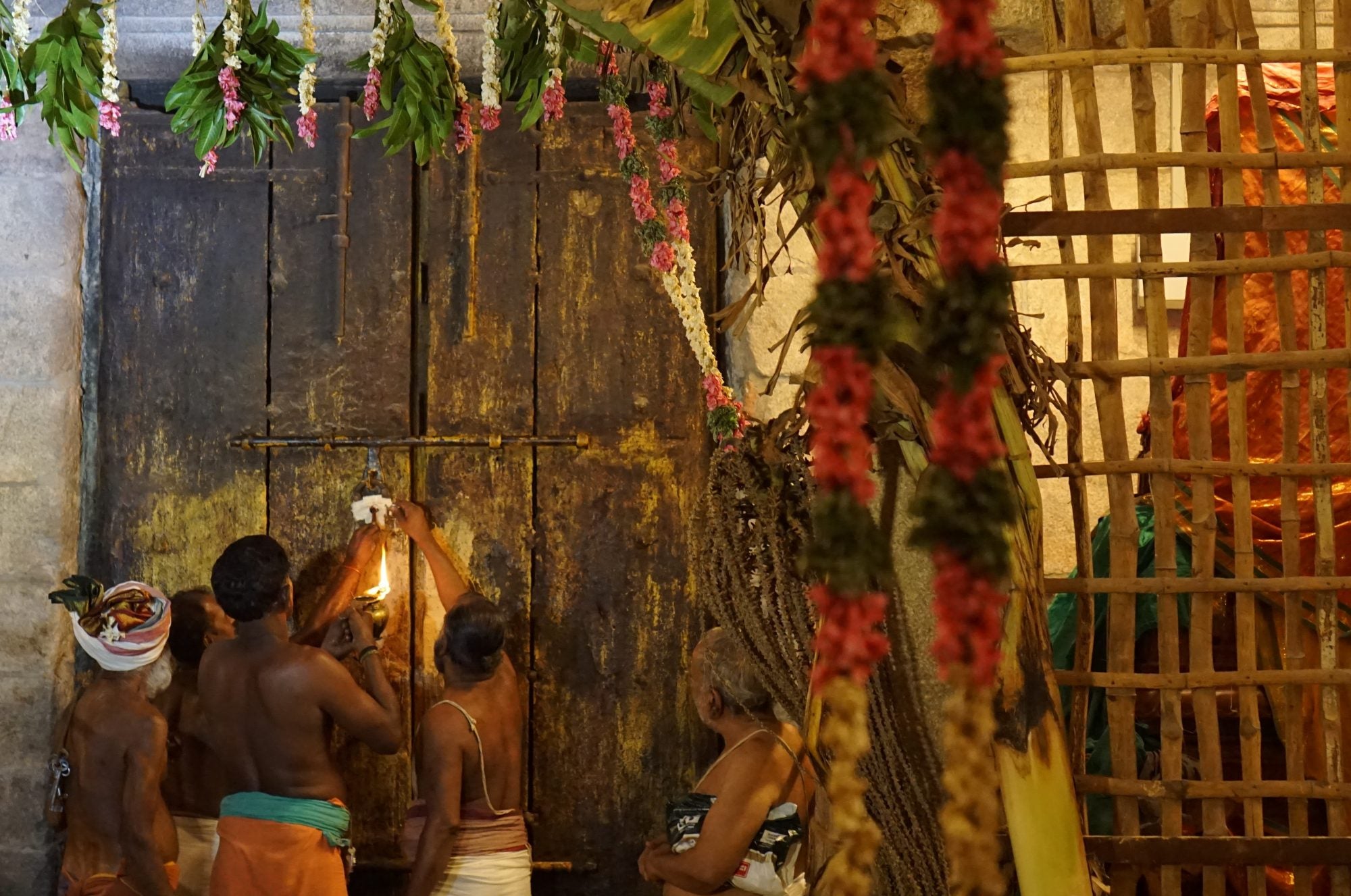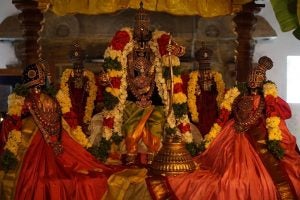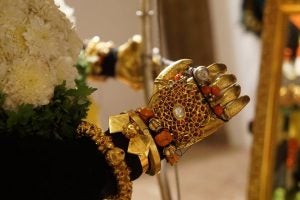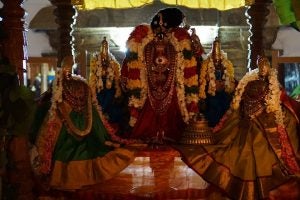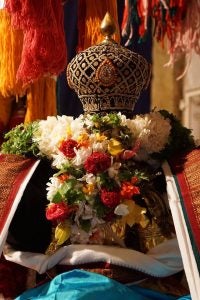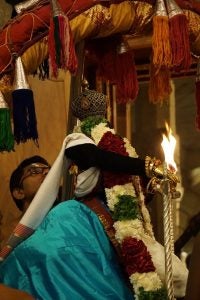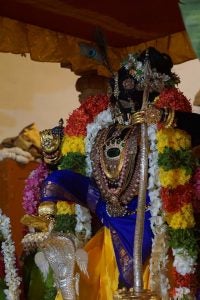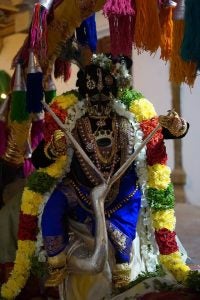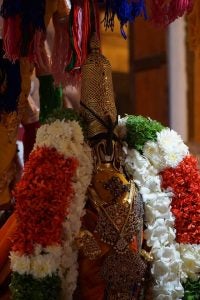Adhyayanotsavam Day 5 (Dec 23)
Texts: Tiruccanda Viruttam, Tiruppallielucci, Tirumalai, Amalanadipiran, Kanninun Ciru Tampu–conclusion of Mudal Ayiram
Alankara/Tirukkolam: Nammalvar (both).

This festival is marked by shifts of different sorts, points of transition, change, heightened intensity. Yesterday, was such a day, and occured at the festival’s quarter point (day 5). Today, Nambi as Nammalvar in a temple where Nammalvar *is* Nambi. The tirukkolam itself was astonishing–it was uncanny how similar Nambi looked to the Nammalvar at Alvar Tirunagari. Perhaps it’s because both icons are small and their faces have softened with years of love. This alankara recalled to mind Andal’s mercurial changes during the Markali Niratta Utsavam, when she becomes Periya Perumal. It’s utterly impossible to tell the two of them apart. I suppose this is the point–to speak of that special, unbreakable, all consuming intimacy–the language of ornamentation is the language of revelation. Poetry makes the world, but decoration makes the god.
I want to include a Divya Prabandham verse with every image. Given the Nammalvar alankara, it would be appropriate to do a verse from Maturakavi’s Kanninun ciru tampu. But somehow, I am drawn to this haunting verse on Arankam, which seems to get to the heart of things.
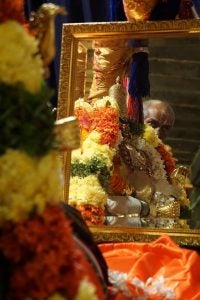
A body like a great green mountain
coral red lips, eyes radiant as lotus
Acyuta, king of celestials, beloved of cowherds
Give me Indra’s heaven to rule
and I’ll reject it.
To taste you is the real pleasure
lord of Araṅkam.
Toṇtaraṭippoṭi Āḻvār: Tirumālai 2
